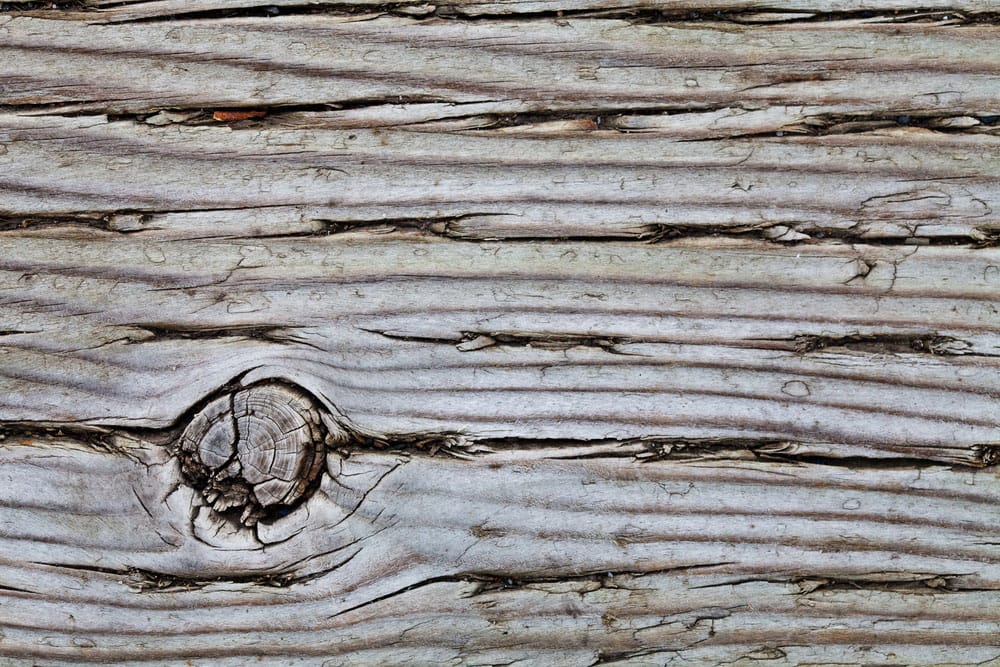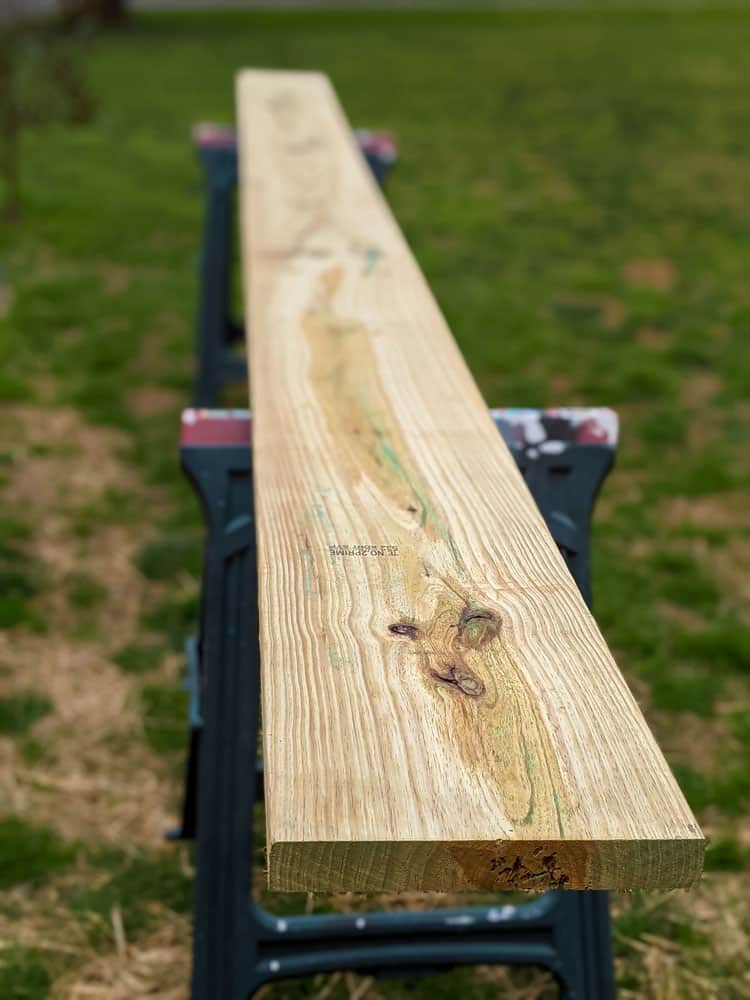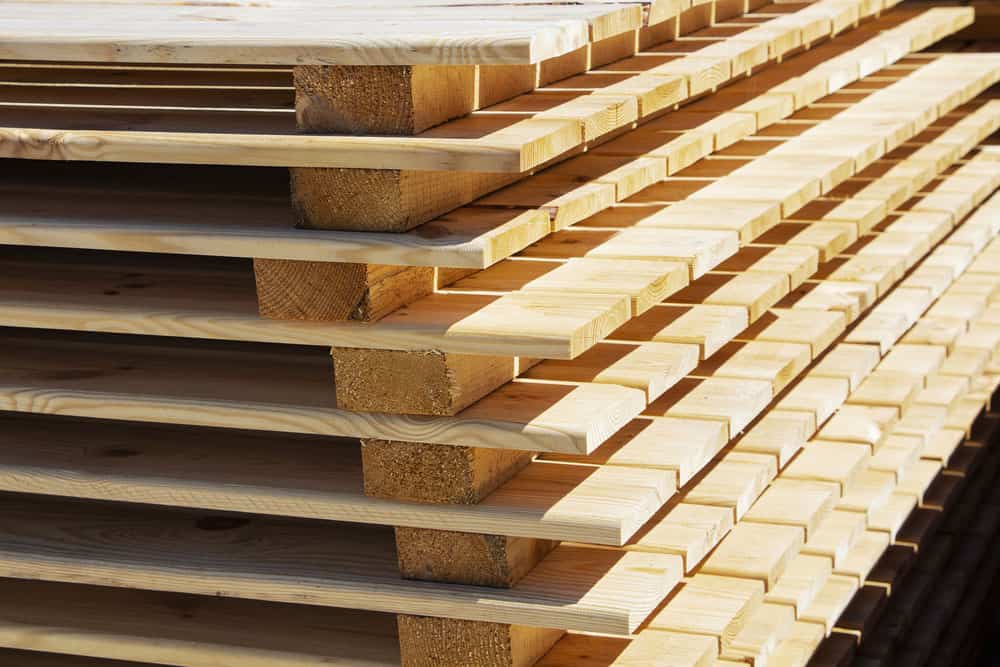If the question, How Long Should Pressure Treated Wood Dry Before Cutting interests you, you’ll find this blogspot highly resourceful.
Woodworking enthusiasts and DIYers cherish preserved wood for its durability and protection from decay and termite attack.
It is beneficial to note the need for proper drying for preserved wood. This will save you many hassles when handling wood in the long run.
PT is the ideal choice for building and construction projects.
However, while seasoning timber is vital to achieving optimal results, it is also crucial to preserve it the right way to attain quality timber before cutting.
Read on to learn more about preserved wood and how to preserve it before use.

Old pressure-treated wood
What is Pressure Treated Wood?
When enriched with protective compounds to make it more resilient to degradation agents, regular wood is called pressure-treated (PT) wood.
Formally, arsenic was the primary compound used for treating timber, but that was before the EPA banned it in 2004 because it raised a lot of health concerns.
Copper was then approved as safe and suitable for timber treatment.
We rate preserved woods based on their intended use. For instance, soil contact and above-soil use.
The construction surface or environment for a particular timber influences how many substances are injected into it.
Ground contact wood lasts longer than above-soil wood. This is because wood materials used for soil contact structures get impregnated with more substances than the above-soil wood.
PT is only suitable for outdoor use. When used in residential applications, it is mainly found in playgrounds or places like raised garden beds or pool decks.
Meanwhile, it doesn’t mean pressured timber is dangerous to your health.

Freshly treated wood
How to Dry Pressure-Treated Wood
Drying PT is a crucial step that, when ignored or if not correctly done, leads to problems such as wood damage.
If you don’t dry PT properly, it loses its whole point, adding prolonged durability and stability to timber structures.
There are two techniques for drying treated timber. They are both alternative means to a particular end, offering the same solution but with different unique attributes.
The two techniques of drying PT include
Kiln drying
Kiln drying involves leaving timber to dry in a manmade environment. The process takes place in a facility called ‘kiln.’
You control the atmosphere around a kiln to enable the fast drying of timber.
It is set to a favorable condition to let the timber lose water faster than in an uncontrolled environment.
Pros of kiln drying: Kiln drying makes the drying of timber faster, making it possible for you to put your timber into use sooner.
It also makes timber drying consistent. The atmosphere is consistent around the kiln, and every part of the timber dries simultaneously.
Cons of kiln drying: Unlike drying, kiln drying timber imposes higher financial expenses.
Air drying
Air drying is the usual technique of allowing the timber to dry in the open. It takes place in an uncontrolled wood storage tent.
You must arrange the timber to ensure even air distribution around the wood.
It would be best to arrange the timbers parallel to each other with vertical logs or planks between each layer.
Space the rows of timber properly to ensure proper ventilation.
Pros of air drying wood: With air drying, you won’t have to worry about any additional financial expenses. You leave the timber to dry in a ten where rain won’t fall on it.
Cons of air drying wood: Drying is slow, and the timbers may not dry uniformly due to uncontrolled environmental conditions.

Wood kiln drying factory
How Long for Pressure Treated Lumber to Dry
The mechanism employed in timber treatment results in over-saturation of the timber fibers with excess liquid.
For this reason, PT takes a longer time to dry.
The drying of PT depends on many factors, of which the atmospheric condition is the primary consideration.
The atmosphere contributes to how fast or slow it will take to dry
Higher atmospheric conditions will hasten the process, while a high-humidity climate will slow the pace.
Other things that contribute to the drying rate are the texture, the density, and the wood type.
Generally, the minimum drying time a freshly treated timber is one month.
It can take longer or less, according to the liquid content of the timber.

Air drying wood
Conclusion
Drying preserved wood is a process that should be taken seriously as it plays a vital role in determining the durability of structures built with preserved timber.
Before cutting a preserved wood, always test to ensure it is appropriately dry and ready for use.
You can do this by feeling the timber, testing the water absorption rate, or using the digital moisture meter.
If you properly dry it before use, you will gain the full advantage of investing in PT.
The measures discussed in this blog post will help you estimate how long to dry your wood before cutting, according to your drying technique.
